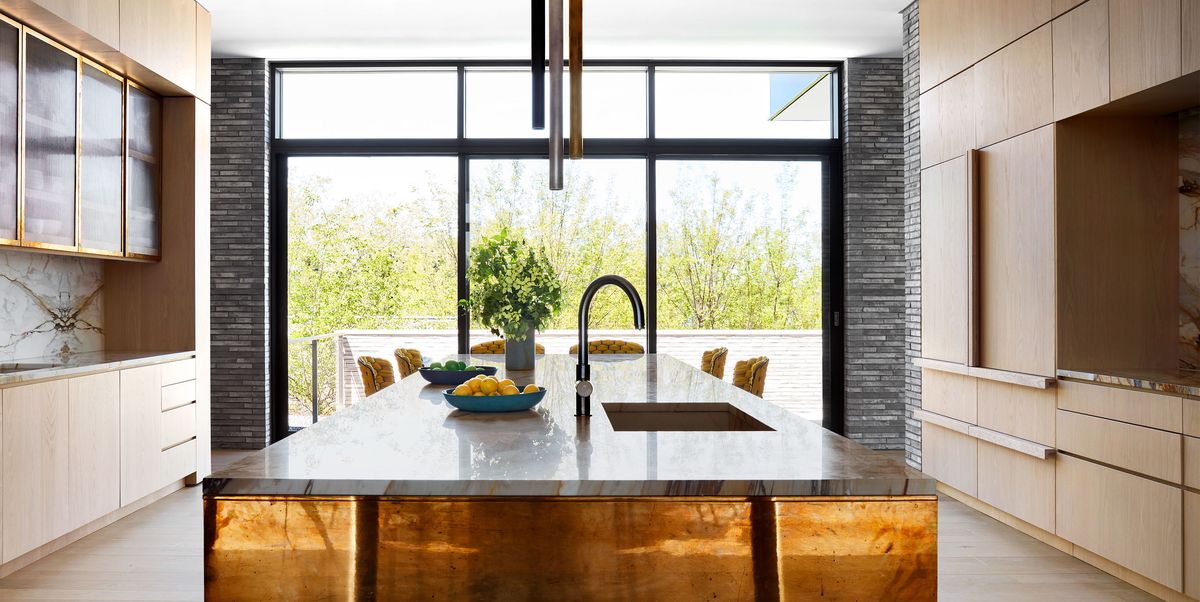Whether referring to design renderings, home automation or the process of doing business, there is no question that technology is playing an increasingly important role in kitchen and bath design. The range of technological tools available today is vast, and can arm industry professionals with options for providing the best possible service for their clients.
Technology and artificial intelligence (AI) are truly revolutionizing the renovation industry, and will continue to have an increasingly significant impact on the remodeling process in 2022 and beyond.
Renovation Challenges
Understanding the kitchen renovation process is historically challenging, time-consuming and expensive. Not many people live in a home they truly love, and it has a big impact on their lives.
Younger generations really appreciate design because we’ve all been groomed by Pinterest and Instagram. That being said, design is a real discipline, and when it comes to renovations, homeowners need really precise plans to do them well, which typically requires professional help at a cost. And that’s just in a normal, more predictable market.
Right now, there’s no question that we’re experiencing a tight real estate market, along with supply chain disruptions at every turn. Because of this, there is little to no room for mistakes in the home renovation process. Take the initial pre-construction documentation process, for example. Incorrect measurements at the jump can equal months of setbacks, as customers wait for cabinetry, countertops, appliances and flooring.
The tech world is beginning to understand these pain points and is looking for innovative ways to simplify the renovation process for homeowners and designers. Typically, a fully manual design and documentation process is expensive. Not only are 3D scanning technology and AI-generated plans actually cheaper for the end user, they also provide an improved level of accuracy.
3D scans take half an hour to complete, and are ready to use within days, cutting down on the project timeline by weeks, and therefore cutting labor costs. 3D scans coupled with AI offer more detail, provide accurate measurements and shed light on the kitchen’s current conditions. Now the client and designer can better visualize the budget and determine needs and wants before they move forward.
Technology grants customers the gifts of speed and transparency, and opens them up to competitive labor. Technology today, and in the future, will automate the tedious tasks a renovation project requires. New innovations have found a way to remove human error and provide real-time costs and project timelines.
AI In Detail
Oftentimes, what seems like a straightforward project takes months longer than originally estimated, and costs a lot more than originally expected due to overlooked issues in the pre-construction process. The proper AI tools, coupled with 3D scans, can eliminate many issues from the beginning that are typically discovered weeks into the process.
3D scans alongside AI technology helps AEC pros to better understand current conditions and objects by garnering data from a consumer’s space and embedding technology into a digital replica of it. For example, an AEC professional is able to see a sink in the scan and, once the scans are embedded with intelligence using architectural codes and logic, they are able to understand the treatment and range of motion that is possible without having to make changes to the plumbing.
AI can also uncover possibilities of a space by developing hundreds of permutations and outcomes aligning to the nuances of the room. The designer is able to then narrow the possibilities down based on the consumer’s wants and needs. For example, if the homeowner wants to optimize for storage or entertainment, AI can generate several potential layout options with these considerations in mind.
AI serves as a “complement to” as opposed to the “replacement of” AEC professionals. Technology in this context removes human error, manual material selection and pricing for labor. Because of this streamlined process, AEC professionals are able to access current conditions, plans, takeoffs, materials schedules, robust construction docs and fabrication files. This frees up an enormous amount of valuable time for the architect or designer who does not have the internal resources or overhead.
With more accurate and transparent information up front via AI, designers and architects are able to focus on higher value functions like design direction, customer relationships and business development. It also allows them to serve more customers and take on projects they would otherwise have to decline.
These pros can now spend a bulk of their time presenting creative design ideas rather than dealing with project hiccups. Ideas that were once before swept under the rug, due to time or budget constraints, can now be actualized.
Over the next months and years, homeowners and design professionals can expect even more interactivity when it comes to the kitchen and bathroom renovation process, as they will soon be able to take part in interactive manipulation of a given space. Technology continues to evolve and advance, and there are exciting innovations ahead. ▪
This month’s guest columnist, Ian Jaffrey is the CEO and co-founder of Skipp, a kitchen renovation service that uses technology-driven tools to provide customized kitchen design and planning services. To learn more about Skipp, visit www.skipprenovation.com or @SkippRenovation on Instagram.

